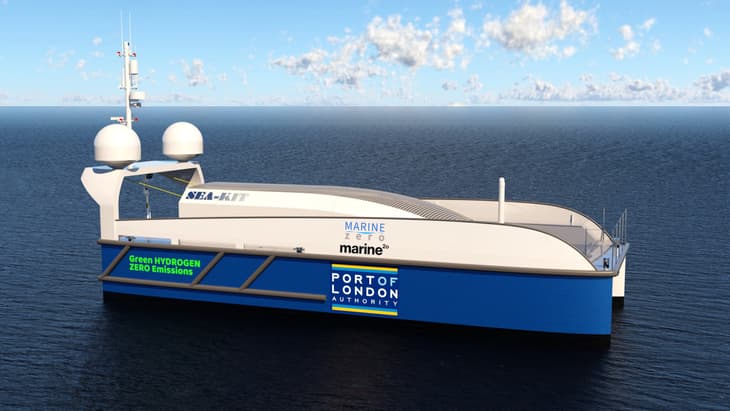SEA-KIT International has been awarded funding from the Zero Emissions Vessels and Infrastructure (ZEVI) competition to design and manufacture a hydrogen-fuelled uncrewed surface vessel (USV) in the UK.

Partnering with maritime decarbonisation disruptor, Marine2o, the two companies will also build a land-based infrastructure capable of producing green hydrogen through renewable energy and the electrolysis of water as part of the project.
The Zero Emissions Ports Hydrogen Refilling Survey Vessel (ZEPHR) project will aim to extend vessel operation for port operators and stakeholders through a complete energy transition, using green electricity to support 100% green hydrogen production, compression, storage, and dispensing.
Marine Zero will support Marine2o with the regulatory compliance and the design and integration of the dispensing facility, while the Port of London Authority (PLA), a consortium partner, will host the hydrogen refilling station on the River Thames, London, and operate the ZEPHR USV.
John Dillon-Leetch, PLA’s port hydrographer, said, “Embracing innovation and new fuel technologies utilised on ZEPHR will enable us to be more sustainable and efficient in the production of the essential hydrographic data and products that we provide to all mariners on the Thames.
“The five-year project will also support environmental monitoring, academic and industry research programmes as well as feeding into the Maritime Hydrogen Highway programme – all key elements of the Thames Vision 2050, supporting the PLA, our partners and stakeholders to deliver on their sustainability goals.”
The PLA has set out emissions reduction targets and will use the ZEPHR USV to support it in achieving its aims.
The Thames is Britain’s busiest inland waterway with over five million tonnes of good and materials handed over each year. The Thames Estuary is well placed to support the development of a hydrogen ecosystem.
In 2021, the Thames Estuary released its hydrogen route map which could generate £3.8bn ($5.24bn) gross value added (GVA) by 2035, identifying various key areas for the value chain including where demand, supply, distribution and storage opportunities exist.
SEA-KIT’s remotely operated USVs are operational on offshore projects around the world and improve safety by having crew located onshore. Its smaller size also leads to cost savings when compared with larger survey vessels. The ZEPHR will use two hydrogen fuel cell systems for redundancy.
Lloyd’s Register and the Maritime and Coastguard Agency will review the vessel, to determine whether it meets regulatory and compliance requirements to obtain approvals for continued operations. The application will be built at SEA-KIT’s production facility in Tollesbury, Essex, the UK.






